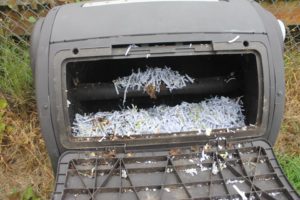My article today concerns an event from August 6, which was my wife’s birthday. On the occasion I bought her a beautiful bouquet of roses. These dozen roses were of an unusual color making them especially attractive. With that thought in mind, I plan to talk about rooting roses which one receives as a gift bouquet and producing a living memory. We often encounter special events in our life where we wish that we could keep the set of roses forever, well, you actually can. Most people dry roses from special events in their life, but you can create a complete bush with very little effort. Imagine how romantic it would be to preserve a complete rose bush from your wedding bouquet or other special event.
Roses are resilient by nature and they are easily grown and handled. The methods which I propose are “asexual’ propagation.” Thus, the flower which will result is “true” to the original stem. As a companion article in the weeks to come, I plan to explain about planting rose seeds to those experimenters who may be interested in that aspect of rose growing.
Before we get into the cutting and planting of the rose stem, let’s talk a bit about the soil necessary for growing healthy rose bushes. Regular garden soil is generally too dense for the rooting of stems. The soil that you select should be composed of several ingredients. I make mine out of equal parts of potting soil, perlite and sand. Mix it well and add some compost to the mixture.
Items needed for this experiment
- Rose bouquet
- Potting soil
- Perlite
- Sand
- Rooting compound
- Water
- Sharp knife
- Pencil
- Plastic wrap
I soaked the bouquet overnight in a container of water. Next, I start the process by taking one rose stem of the bouquet. Unfortunately, if the stem has turn brown it is too late to propagate it. There is simply no life left in the stem and it will not grow. You will need a section of stem which is approximately 6 to 8 inches long, therefore if you have a complete stem it is possible to get two cuttings from it. Remove the leaves from the plant so that you have only the bare stem. Cut the stem at an angle at both ends so that you have more internal growth available. Scrape the end of the stem with a clean, sharp knife to expose more of the inside section. Dip the section into some fresh water, and I recommend dipping it in rooting powder since it contains fungicide and plant growth regulator. Take your pencil and make a hole in the moist soil and finally place the stem into the hole several inches deep. Cover some dirt around the stem and place a piece of plastic over the container.
Your goal during the rooting process should be to maintain a moist but not soaked environment within the rooting container. The rose stems must be maintained in this humid environment which is why we use the plastic. Use this for the entire rooting period to keep the moisture in. To ensure that you are placing the stem into the soil properly look at the prickle or thorns of the rose stem. These should be pointing up away from the soil. The best rooting temperature is approximately 75°F.
When it is time to plant your roses outdoors in the spring, it will need at least 6-weeks of an acclimatization period prior to planting. This period is necessary to get the plants roots established well into the ground and accustomed to the environment. I will keep you updated on this experiment and provide you with additional information as the process develops.
As an added bonus to those people who already have rose bushes in their yard here is a quick tip on how to multiply them. This technique is called “pegging” and is a natural stem layering process where you nick or scratch the bottom portion of the rose cane, causing the plant to send rooting hormones to the injury location. Weigh the stem down a little below the soil level with a rock or a “peg” stake and cover the area with some soil. The following spring the stem will have produced roots, and all you need to do is separate that stem from the Mother plant.




